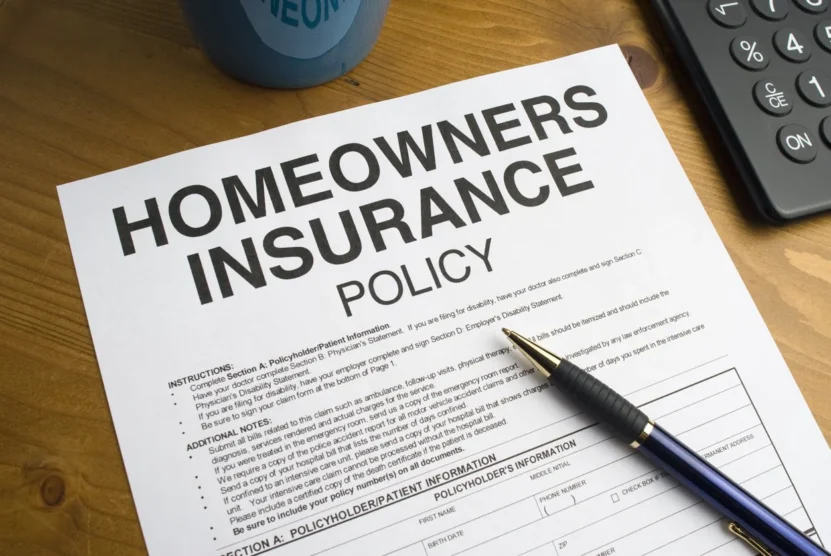Buying your first home is exciting, but there are many things to consider beyond choosing the perfect property. One critical aspect often overlooked is ensuring proper coverage. Whether it’s natural disasters, unexpected accidents, or liability concerns, having the right protection means peace of mind.
First-time buyers face unique challenges, so knowing what matters most helps avoid costly mistakes.
Key Points:
- Evaluate coverage options specific to your needs.
- Understand policy exclusions before signing.
- Review coverage limits to match your home’s value.
- Consider bundled policies for cost efficiency.
- Work with a trusted provider for personalized support.
1. What Should First-Time Buyers Prioritize?
New homeowners often underestimate the importance of assessing risks. Basic coverage might leave gaps, so start by evaluating what policies address potential dangers in your area. For example, in regions with frequent storms or flooding, additional coverage becomes essential.
Policies often include liability protection, structural damage coverage, and contents replacement, but each provider varies. Knowing your property’s vulnerabilities is the first step to making informed decisions.

2. The Costs
Budgeting for coverage is crucial, especially for those entering homeownership. If you’re searching for details specific to your area, consider resources that outline costs and options. First-time home buyer insurance Ontario policies often provide insights into regional averages, tailored coverage, and potential savings. Visit Erie Mutual’s guide to understand local trends.
Choosing a provider with a personable approach can make a significant difference. Experts focus on tailored solutions and active engagement ensures their clients feel valued. This model exemplifies the importance of working with companies that prioritize their members’ interests.
3. Questions to Ask Your Provider
Many policies come with clauses that could surprise you later. Before choosing a provider, ask:
- What does the policy exclude?
- Are natural disasters like earthquakes or floods included?
- Does it cover temporary accommodation if the home becomes uninhabitable?
- Can you customize the policy to reflect your lifestyle?
- What are the deductible amounts, and how do they impact premiums?
Providers with a transparent approach will answer directly, helping you avoid pitfalls. Always review the fine print with a professional if needed.
4. Five Essential Steps for Choosing the Right Coverage
Follow this straightforward process to ensure you’re well-protected:
- Assess risks specific to your location ─ Natural disasters, theft, or liability risks differ depending on where you live.
- Compare multiple quotes ─ Prices vary significantly between providers, so shopping around saves money.
- Evaluate coverage limits ─ Ensure the policy reflects your home’s value and renovation costs.
- Consider bundling options ─ Combine home and auto policies for better rates.
- Choose a reputable provider ─ Providers prioritize personalized support and community involvement.

5. Common Mistakes to Avoid
New buyers often focus on price alone, ignoring critical details. Cheap policies may exclude essential coverage, leaving gaps. Another mistake involves underestimating personal property value.
Furniture, electronics, and appliances add up quickly. Conduct an inventory to avoid surprises during a claim. Also, skipping policy reviews each year means missing updates that could lower costs or enhance protection.
6. Specialized Coverage Options
Every home has unique needs. For rural homes or farms, policies tailored to agricultural risks protect against equipment damage and liability concerns. If you run a home-based business, ensure coverage extends to business assets. Condo owners should look for policies that bridge gaps between personal property and the building’s master policy.
7. The Role of Deductibles in Your Policy
Deductibles play a significant role in determining how much you pay out of pocket for claims. A higher deductible often means lower premiums, but it’s essential to strike a balance. If an unexpected event occurs, will you be able to cover the deductible without straining your finances?
For instance, setting a $2,000 deductible may reduce your premium significantly, but if your home sustains damage, can you afford that amount upfront? Many first-time buyers make the mistake of choosing a deductible based solely on affordability. Evaluate your savings and potential risks to make an informed choice.

8. Do You Need Extra Coverage?
Standard policies cover many common scenarios, but they might not be enough for all situations. Consider additional options like:
- Water damage endorsements ─ Protect against sewer backups or overland flooding, which are often excluded in basic plans.
- Valuable item coverage ─ High-value items such as jewelry or collectibles might require separate coverage.
- Identity theft protection ─ Some policies now offer coverage for expenses related to recovering stolen identities.
- Earthquake coverage ─ If you live in an earthquake-prone area, this is a critical addition.
Customizing a policy ensures your unique needs are addressed without overpaying for unnecessary features.
9. Protecting Your Investment for the Long Term
Homeownership comes with evolving responsibilities. Regular policy reviews, staying informed about potential risks, and maintaining open communication with your provider keep your coverage effective. As your needs change, your policy should adapt.
For example, upgrading your home with security systems or smart technology may qualify you for discounts. Additionally, as property values rise, adjusting coverage limits ensures your investment remains fully protected.

10. Tips for Reducing Costs Without Compromising Coverage
Insurance doesn’t have to break the bank. There are ways to save without sacrificing quality:
- Improve home security ─ Install alarm systems or smart locks to reduce risks and qualify for discounts.
- Increase your deductible ─ If you can afford a higher deductible, it could significantly lower premiums.
- Bundle policies ─ Combine your home and auto policies under one provider for better rates.
- Maintain a clean claim history ─ Avoid minor claims that might raise your premiums in the long run.
- Shop around periodically ─ Compare quotes every few years to ensure you’re getting the best deal.
11. How to File a Claim
Accidents happen, and when they do, filing a claim can feel daunting. Follow these simple steps:
- Document the damage ─ Take photos and make notes of the incident.
- Contact your provider immediately ─ The sooner you report, the quicker the resolution.
- Provide necessary details ─ Be prepared with receipts, estimates, and any other supporting documentation.
- Work with the adjuster ─ They’ll evaluate the damage and help determine the payout.
- Follow up on repairs ─ Ensure the necessary work is completed and notify your provider.
Having an organized process ensures a smoother experience during an otherwise stressful time.
Conclusion
New homeowners often feel overwhelmed, but securing the right coverage is simpler with preparation. Understanding your home’s needs, evaluating options, and working with trusted providers ensures long-term peace of mind. Avoiding shortcuts and staying proactive will help you navigate coverage confidently. Start your search today and protect your investment effectively.

